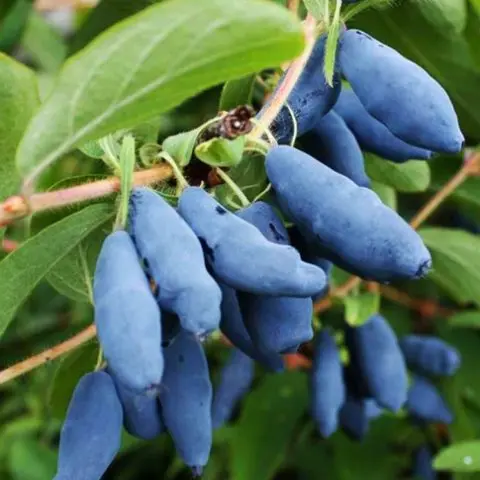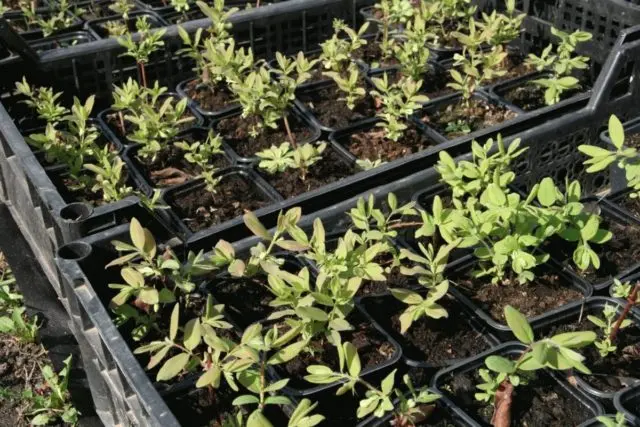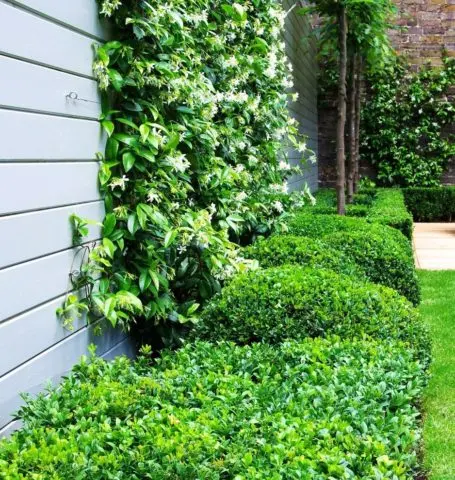Contents
Honeysuckle can not be found in every garden plot, but recently it has become quite popular. Gardeners are attracted by the unusual appearance of the berries, their taste and the decorativeness of the shrub. Plant cultivars, such as Viola honeysuckle, are easy to grow on your own. Caring for her – from planting to harvesting, is simple, but has its own characteristics, which every gardener should be aware of.
Description of honeysuckle variety Viola
This variety combines the features of the edible honeysuckle of the Altai and Kamchatka populations. The plant is vigorous, has a low oval crown. It grows to a height of 2 m, in a circle it occupies a volume of 2,5 m. The old branches of the bush are thick, their bark is brown-red, the young ones are light green, erect and thin. The leaf is large, with a bluish pubescence on the inside.
The fruits of Viola honeysuckle are large (1-1,2 g each), in the form of oblong barrels, with a slightly bumpy surface. They have a dense, dark blue skin, covered with a wax coating, the flesh is also dense, sweet and sour, slightly tart, with a slight bitterness. Thanks to the Altai ancestors of honeysuckle, precocity and high yields are characteristic: 6-7 year old bushes are capable of producing 4 kg of fruit. Moreover, all the berries ripen together and quite soon after flowering – already in early June. They do not wrinkle, do not burst, they are stored well, they can lie in a cool place for a very long time – even until spring. In winter, they will be an excellent source of vitamins.
The variety is frost-resistant, can withstand severe frosts without shelter, therefore it is suitable for regions with a cold climate – northwestern, for which it was bred. It grows well in the Middle lane, Moscow region. The variety does not differ in drought resistance, loves moisture, its lack has a bad effect on the condition of the plant and its fruiting. The disadvantage of Viola is considered to be the rapid fall of the fruit after ripening, so it is recommended to pick berries in a short time.

The fruits of the Viola variety are quite large, but prone to rapid fall.
Planting and caring for Viola honeysuckle
Throughout the growing season, the plant needs care. But you have to start with landing. The further development of the bush and the level of its fruiting depend on how it will be produced.
Terms of planting
Honeysuckle is planted or transplanted in autumn – from September to mid-November. At this time, the plant begins to shed its leaves, the vegetation processes slow down, which favorably affects the survival rate. The deadline for planting is 3-4 weeks before the onset of cold weather. This is necessary so that the bush has time to take root in a new place. It is not recommended to plant honeysuckle in the spring, as it wakes up early.
Selection and preparation of the landing site
Honeysuckle grows best in the shade, so you need to choose a place for it in the shady area of uXNUMXbuXNUMXbthe garden or not far from tall trees, buildings that will shade the bush. The soil culture loves chernozem, with an acidic reaction in moderate terms.
Before planting seedlings, planting pits are prepared with dimensions of at least 0,5×0,5×0,5 m. Fertilize with organic matter – pour 2 buckets of compost or humus, 1 liter of ash, 1 tbsp. l. superphosphate, mix the fertilizer with the ground.
Rules of landing
Viola honeysuckle bushes are planted, which are 2-3 years old. The sequence of work is simple and almost no different from planting other fruit shrubs:
- First, the prepared pits are watered so that the earth is moist.
- Then they straighten the roots of the seedling, put it in the middle of the hole and sprinkle it with earth.
- The soil is mulched with plant material.
The distance from one bush to another should be at least 1,5 m, so that they have enough space, nutrition and their branches do not intertwine when they grow. It is inconvenient to pick berries in dense thickets, the plants themselves will also feel uncomfortable, their productivity will gradually decrease, the berries will become smaller.

Planting young honeysuckle is carried out on prepared soil
Watering and feeding
As a top dressing for Viola honeysuckle, it is better to choose organic matter, rather than mineral fertilizers. A lot of it is not required: it is enough to pour 1 bucket of humus and 0,5 kg of ash under the bush in the spring. This will allow the bush to form many large fruits.
Pruning honeysuckle variety Viola
The variety has a good ability to form shoots, grows quickly and occupies the area allotted to it. Plants have dense foliage, strong straight shoots, so they can form a dense “wall” even without support. To do this, you need to plant at least 3-5 bushes in one row. Cut honeysuckle after 3 years of life, the time is spring, before the start of sap flow or autumn, after leaf fall. The tops of the branches are removed to form a neat crown, as well as dried and broken shoots growing inside the bush, which will thicken it. 12-15 branches are left in each bush.
Wintering
For winter, the bush is prepared after pruning. It is not necessary to cover honeysuckle branches, they are not damaged by frost. But to protect the roots, the root zone is covered with mulch from foliage, straw, hay, needles. Its thickness is at least 5 cm.
Reproduction of edible honeysuckle Viola
For this, vegetative parts are used – cuttings, layering. They are cut from last year’s shoots when the ovary appears on the bush. 2 leaves are left on the cuttings, they are planted in a greenhouse, in a mixture of peat and sand (1 to 3). The optimum temperature for rooting is +20 ° C, high humidity is required. Layers are added dropwise in the spring or transferred to their place in the fall.
Honeysuckle seedlings suitable for transplantation should reach 2-3 years of age. They are planted by transshipment, that is, together with an earthen clod, in order to minimize possible injury to the roots.

Honeysuckle seedlings are planted in batches in small pots.
Honeysuckle Pollinators Viola
For better fruit set, the plant needs pollinators. It should be honeysuckle of 3-5 different varieties, but with the same flowering period (early May). Plant them next to each other. For the Viola variety, pollinators can be varieties Moraine, Amphora, Nymph, Blue spindle.
Diseases and pests
Honeysuckle varieties Viola affect fungal diseases, treat them and carry out prevention by spraying the bush with a solution of copper sulfate (100 g per 10 l). Viral diseases are not treated, diseased plants are dug up and burned, the soil is sprinkled with ash.
Honeysuckle pests are aphids, mites and scale insects. Signs of aphids – twisting leaves, ticks – dark growths at the bottom of the foliage. The scale insect can be found on branches and shoots. Insects are destroyed with drugs Aktara, Eleksar, Omayt, Mavrik, Rogor. Solutions are diluted according to the instructions. Multiplicity of treatments – 1 or 2.

Healthy flowering honeysuckle fits perfectly into the design of the infield
Conclusion
Viola honeysuckle can be grown by gardeners in regions with a cool, humid climate. The variety is early ripe and high-yielding, gives large berries with a pleasant sweet and sour taste, the fruits are distinguished by good keeping quality. Does not require constant care and dressing, easily multiplies.










